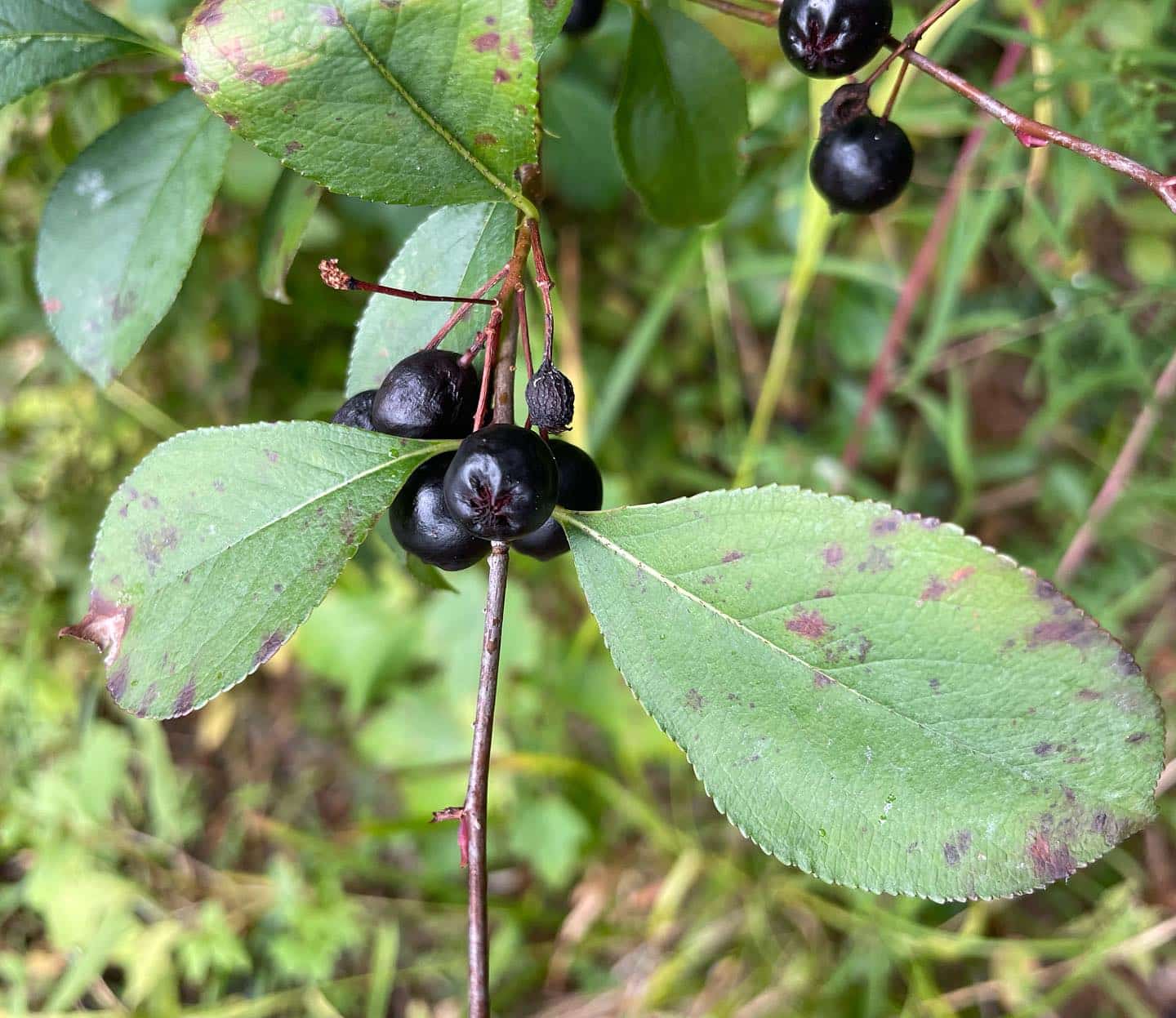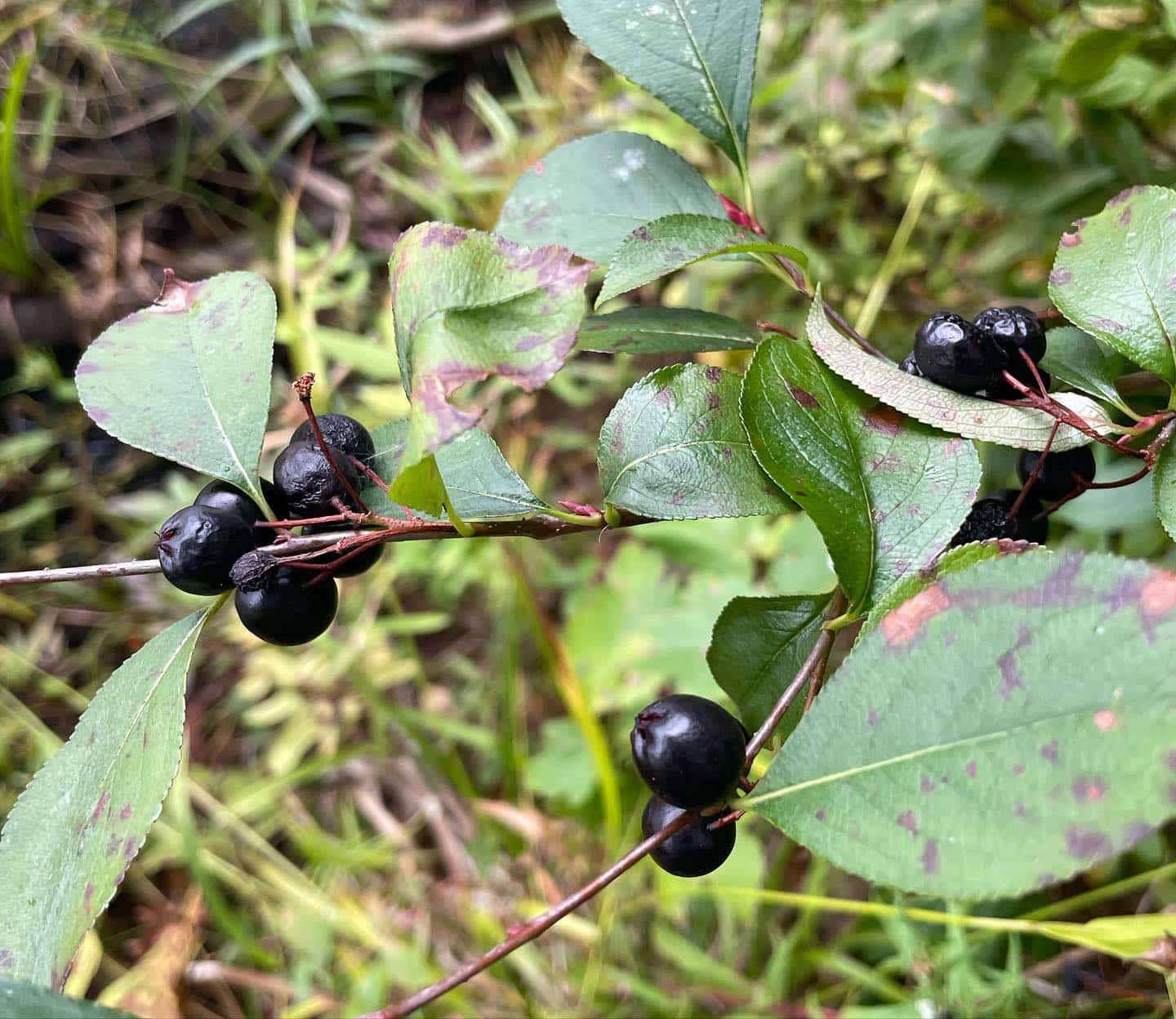Page Created by Connecticut Foraging Club
Upcoming Events | Meet the Instructors | Plant Archive | Mushroom Archive
----------------
Upcoming Events | Meet the Instructors | Plant Archive | Mushroom Archive
----------------
Black Chokeberries (Aronia melanocarpa) are edible, native berries that mature in early Fall.

Black chokeberries can be found near swamps, bogs, and lakes. They prefer wet areas. The thornless shrub is self-fertile, so you only need one plant to get berries. Each berry grows on its own stem, in clusters of 2-20 berries.
Leaves turn red in fall. The leaves have a serrated edge and come to a point. Berries can hang on the plant throughout winter but are best harvested in fall.

Chokeberries have a sour taste. They can be turned into juice or syrup or added to pies or baked goods. Black chokeberries are extremely high in antioxidants, having 1.5 times the amount of anthocyanins as wild blueberries. Chokeberries have also been shown to be anti-inflammatory, antiviral, support cardiovascular health, and inhibit the growth of cancer cells.

Chokeberries must be differentiated from toxic buckthorn, which has leaves that are glossier and more rounded. Buckthorn plants also have thorns, while chokeberry shrubs are thornless.
--
Written by Amy Demers, founder of the Connecticut Foraging Club. To learn more about foraging in Connecticut, check out our upcoming classes.






